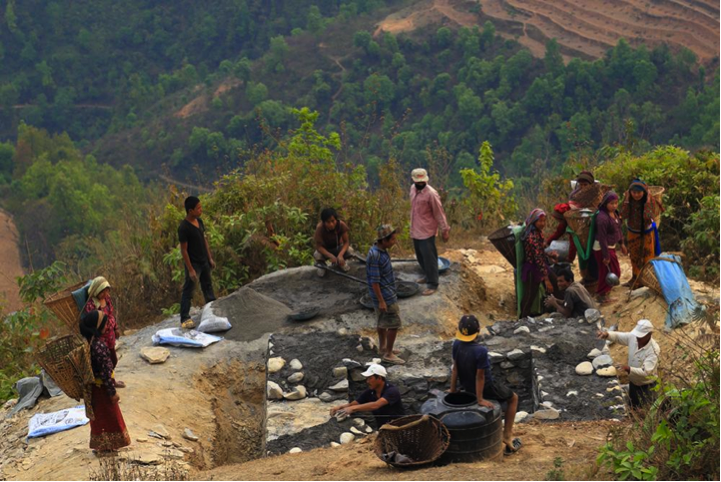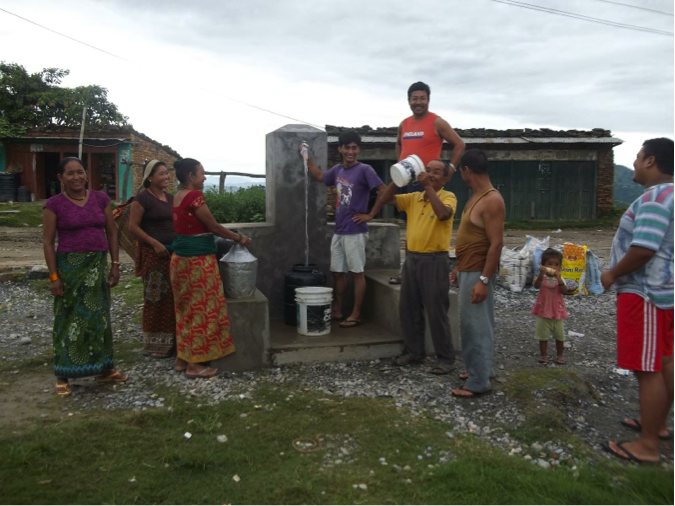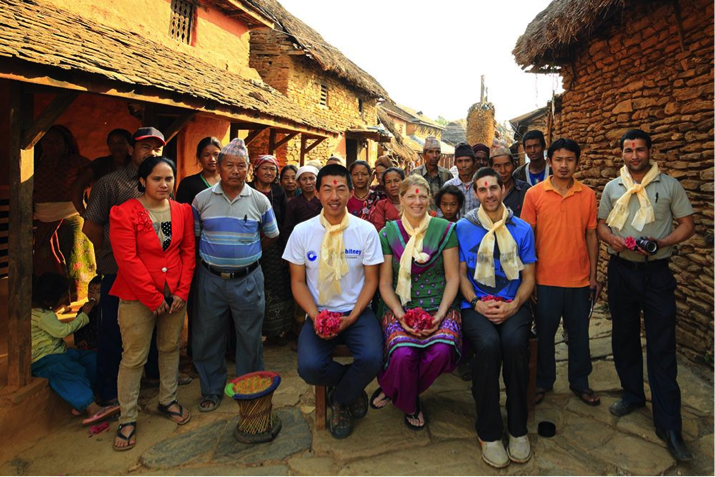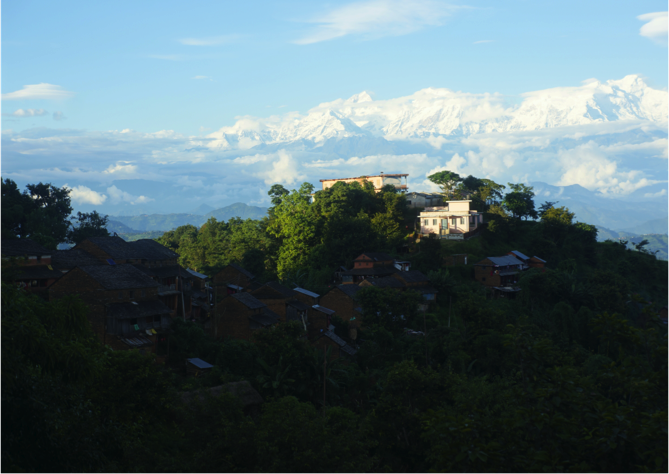View overlooking Sabhung, Nepal community
Over the past year and a half, I have had the privilege of working with an amazing community located in the foothills of Nepal, called Sabhung. As part of the Hartford Professional Chapter (HPC) of Engineers without Borders (EWB) USA, we partnered with a local NGO, Namlo, to help improve water access to the Ward 8 community of about 800 residents.
The community is situated 1000 feet in elevation above their water source. This required community members, often women and children, to traverse the steep hillsides multiple times daily to gather the water they need. This takes away valuable time from their families, school, and household needs.
I traveled with a team to Nepal in fall 2013 to gather the technical data needed to design the water system. It was there that I was able to experience just how difficult it is to live without water. Normal daily activities like brushing your teeth, washing your hands, or showering could no longer be done routinely with a turn of a faucet handle. I even had the opportunity to try the local method of using a namlo to carry the water our team needed. Needless to say, it was quite strenuous!

Small child using namlo to carry water
For our team, the engineering challenge was daunting. Given the drastic elevation of the community from the water source as well as the lack of reliable electricity, our team had to implement a multi-staged, solar powered pumping system to lift water from the spring source to the top level storage tanks. From there, water could be flowed out to seven tap stations distributed through the community.

Sketch showing completed water system
Our implementation of this system began in March of this year. Limited to only the use of hand tools due to lack of electricity, the community effort to construct the system was an incredible sight to see. The excavation of multiple tank sites and carrying of all the construction material, all in the immense heat of dry season with the unforgiving terrain, reinforced just how important water access was to the livelihood of the community.

Community working on water tank construction
However, all the hard work was worth it. Completed in June, the water system is now bringing water to within 50 to 100 feet of each household. The community is overjoyed and hopes to continue to improve their livelihood with a basic need now addressed.

Community members using tap station
With the water supply system now carrying water to the community, our EWB team looks to address another crucial community need, safe drinking water. For water quality, a critical aspect of determining the correct solution to implement is to conduct a thorough analysis of community health to determine the most significant contributors to poor health symptoms.
In addition, another key aspect of the sustainability of the system is for the community to collect funds to prepare for any repairs or upkeep needed to the system. A flat rate is not preferable to the community due to the differences in household water usage. An equitable fee structure must be developed, also taking into account any anticipated socioeconomic changes.

An array of solar panels powering pumps
For these key aspects of community health and sustainability, EWB: HPC hopes to partner with DSO to leverage DSO’s competencies in financial analysis and impact assessment. Be on the lookout for updates as this relationship kicks-off!

Community sends off team in traditional farewell ceremony
For more information, see http://www.ewb-hpc.org and follow us on Twitter (@ewb_hpc).<
Also check out this awesome trailer of a movie of our project:
Full movie premiere details will be coming soon!
Contributed by Wei Guo

